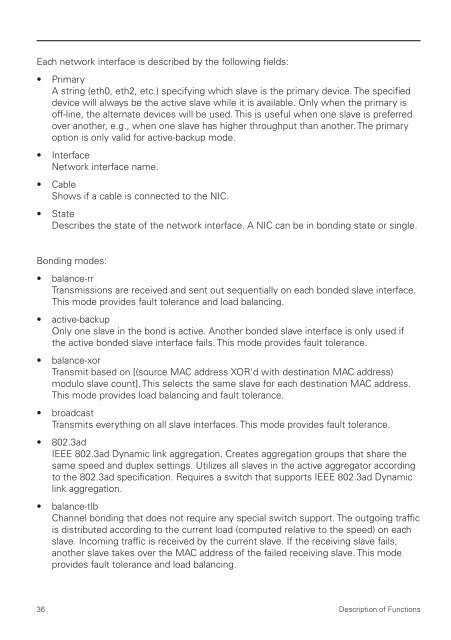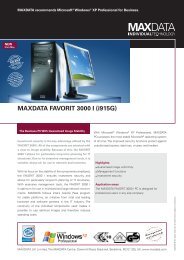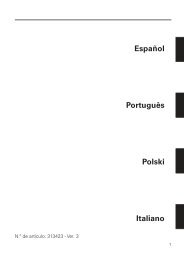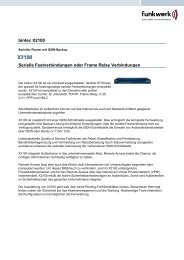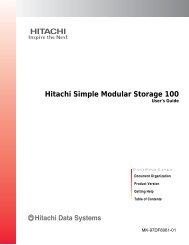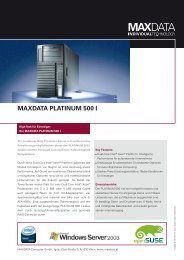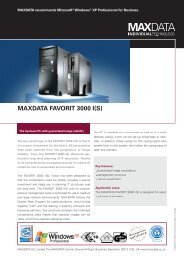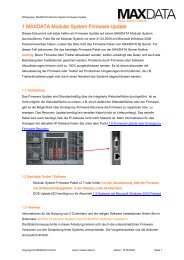Belinea b.center Software Manual - MaxData
Belinea b.center Software Manual - MaxData
Belinea b.center Software Manual - MaxData
You also want an ePaper? Increase the reach of your titles
YUMPU automatically turns print PDFs into web optimized ePapers that Google loves.
Each network interface is described by the following fields:• PrimaryA string (eth0, eth2, etc.) specifying which slave is the primary device. The specifieddevice will always be the active slave while it is available. Only when the primary isoff-line, the alternate devices will be used. This is useful when one slave is preferredover another, e.g., when one slave has higher throughput than another. The primaryoption is only valid for active-backup mode.• InterfaceNetwork interface name.• CableShows if a cable is connected to the NIC.• StateDescribes the state of the network interface. A NIC can be in bonding state or single.Bonding modes:• balance-rrTransmissions are received and sent out sequentially on each bonded slave interface.This mode provides fault tolerance and load balancing.• active-backupOnly one slave in the bond is active. Another bonded slave interface is only used ifthe active bonded slave interface fails. This mode provides fault tolerance.• balance-xorTransmit based on [(source MAC address XOR'd with destination MAC address)modulo slave count]. This selects the same slave for each destination MAC address.This mode provides load balancing and fault tolerance.• broadcastTransmits everything on all slave interfaces. This mode provides fault tolerance.• 802.3adIEEE 802.3ad Dynamic link aggregation. Creates aggregation groups that share thesame speed and duplex settings. Utilizes all slaves in the active aggregator accordingto the 802.3ad specification. Requires a switch that supports IEEE 802.3ad Dynamiclink aggregation.• balance-tlbChannel bonding that does not require any special switch support. The outgoing trafficis distributed according to the current load (computed relative to the speed) on eachslave. Incoming traffic is received by the current slave. If the receiving slave fails,another slave takes over the MAC address of the failed receiving slave. This modeprovides fault tolerance and load balancing.36 Description of Functions


